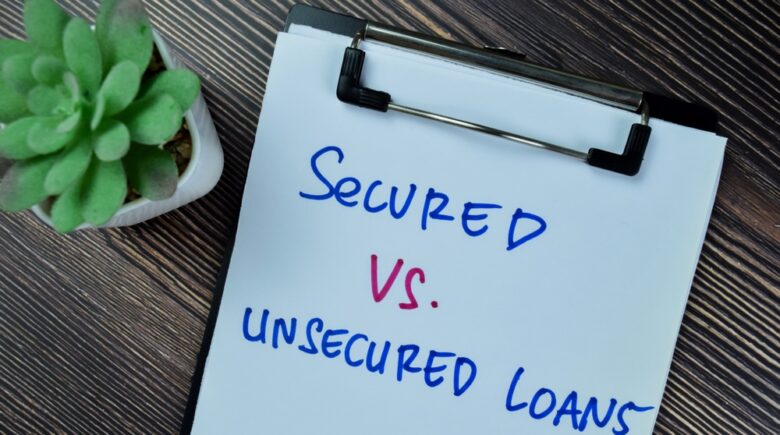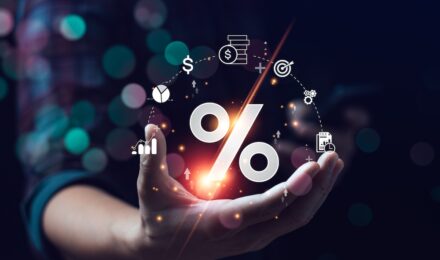When shopping for a personal loan, one of the first distinctions you’ll encounter is whether the loan is secured or unsecured. The difference lies in collateral. A secured loan requires you to pledge an asset, such as a car or savings account, as backing. If you fail to repay, the lender can claim the asset. An unsecured loan, on the other hand, depends entirely on your creditworthiness and income, with no collateral involved.
How Secured Personal Loans Work
A secured loan uses collateral to reduce the lender’s risk. Because the lender has a fallback option, these loans often come with lower interest rates and higher approval odds, especially for borrowers with weaker credit. Common examples include home equity loans, auto title loans, and loans backed by savings or certificates of deposit. The trade-off is risk: if you default, the lender can seize the asset, which may create long-term financial strain.
How Unsecured Personal Loans Work
Unsecured loans rely solely on your financial profile. Lenders evaluate your credit score, income, employment stability, and debt-to-income ratio before approving the loan. Since there’s no collateral, the lender assumes more risk, which usually means higher interest rates. Approval is harder for borrowers with poor or limited credit histories, but the advantage is clear—you don’t risk losing a personal asset if you can’t make payments.
Interest Rates And Costs
Secured loans generally come with lower rates. For example, a borrower with a fair credit score might qualify for a secured loan at 9% APR but face 16% or higher on an unsecured option. Fees can differ as well. Some secured loans involve appraisal or lien fees, while unsecured loans often carry higher origination costs. The key is weighing whether the cost savings of a secured loan outweigh the risks of pledging collateral.
Loan Amounts And Flexibility
Unsecured loans usually cap borrowing limits based on your credit profile. Secured loans, however, may allow larger amounts because collateral reduces the lender’s risk. A homeowner tapping into equity may access tens of thousands more than they could through an unsecured personal loan. Still, the purpose of the loan matters: borrowing more than you need, regardless of structure, can create repayment challenges.
Risks And Consequences
The biggest difference between secured and unsecured loans comes down to risk. With unsecured loans, missed payments harm your credit but do not directly endanger your property. With secured loans, you could lose your car, savings, or home if you fall behind. This makes secured loans a better fit for disciplined borrowers with steady income, while unsecured loans provide peace of mind to those wary of pledging valuable assets.
Which Loan Fits Your Situation
The right choice depends on your credit health, assets, and borrowing goals. Borrowers with strong credit often prefer unsecured loans, since they can access decent rates without collateral. Those with weaker credit or limited options may find secured loans more realistic, as they can qualify at lower rates despite their profile. If you have an asset you’re comfortable using and repayment feels manageable, a secured loan can make sense. If not, an unsecured loan may be safer.
Final Thoughts
Secured and unsecured personal loans both serve important purposes. Secured loans reward borrowers with lower rates but carry the risk of losing pledged property. Unsecured loans protect assets but often cost more in interest. The best loan is the one that balances affordability with your comfort level in managing risk. By comparing offers, assessing your credit profile, and aligning your loan choice with your goals, you can borrow responsibly and confidently.
References
- Experian — “Secured Vs. Unsecured Loans: What’s The Difference”: https://www.experian.com
- Investopedia — “Secured Loan Vs. Unsecured Loan”: https://www.investopedia.com
- NerdWallet — “Secured Vs. Unsecured Personal Loans”: https://www.nerdwallet.com
When shopping for a personal loan, one of the first distinctions you’ll encounter is whether the loan is secured or unsecured. The difference lies in collateral. A secured loan requires you to pledge an asset, such as a car or savings account, as backing. If you fail to repay, the lender can claim the asset. An unsecured loan, on the other hand, depends entirely on your creditworthiness and income, with no collateral involved.
How Secured Personal Loans Work
A secured loan uses collateral to reduce the lender’s risk. Because the lender has a fallback option, these loans often come with lower interest rates and higher approval odds, especially for borrowers with weaker credit. Common examples include home equity loans, auto title loans, and loans backed by savings or certificates of deposit. The trade-off is risk: if you default, the lender can seize the asset, which may create long-term financial strain.
How Unsecured Personal Loans Work
Unsecured loans rely solely on your financial profile. Lenders evaluate your credit score, income, employment stability, and debt-to-income ratio before approving the loan. Since there’s no collateral, the lender assumes more risk, which usually means higher interest rates. Approval is harder for borrowers with poor or limited credit histories, but the advantage is clear—you don’t risk losing a personal asset if you can’t make payments.
Interest Rates And Costs
Secured loans generally come with lower rates. For example, a borrower with a fair credit score might qualify for a secured loan at 9% APR but face 16% or higher on an unsecured option. Fees can differ as well. Some secured loans involve appraisal or lien fees, while unsecured loans often carry higher origination costs. The key is weighing whether the cost savings of a secured loan outweigh the risks of pledging collateral.
Loan Amounts And Flexibility
Unsecured loans usually cap borrowing limits based on your credit profile. Secured loans, however, may allow larger amounts because collateral reduces the lender’s risk. A homeowner tapping into equity may access tens of thousands more than they could through an unsecured personal loan. Still, the purpose of the loan matters: borrowing more than you need, regardless of structure, can create repayment challenges.
Risks And Consequences
The biggest difference between secured and unsecured loans comes down to risk. With unsecured loans, missed payments harm your credit but do not directly endanger your property. With secured loans, you could lose your car, savings, or home if you fall behind. This makes secured loans a better fit for disciplined borrowers with steady income, while unsecured loans provide peace of mind to those wary of pledging valuable assets.
Which Loan Fits Your Situation
The right choice depends on your credit health, assets, and borrowing goals. Borrowers with strong credit often prefer unsecured loans, since they can access decent rates without collateral. Those with weaker credit or limited options may find secured loans more realistic, as they can qualify at lower rates despite their profile. If you have an asset you’re comfortable using and repayment feels manageable, a secured loan can make sense. If not, an unsecured loan may be safer.
Final Thoughts
Secured and unsecured personal loans both serve important purposes. Secured loans reward borrowers with lower rates but carry the risk of losing pledged property. Unsecured loans protect assets but often cost more in interest. The best loan is the one that balances affordability with your comfort level in managing risk. By comparing offers, assessing your credit profile, and aligning your loan choice with your goals, you can borrow responsibly and confidently.
References
- Experian — “Secured Vs. Unsecured Loans: What’s The Difference”: https://www.experian.com
- Investopedia — “Secured Loan Vs. Unsecured Loan”: https://www.investopedia.com
- NerdWallet — “Secured Vs. Unsecured Personal Loans”: https://www.nerdwallet.com







